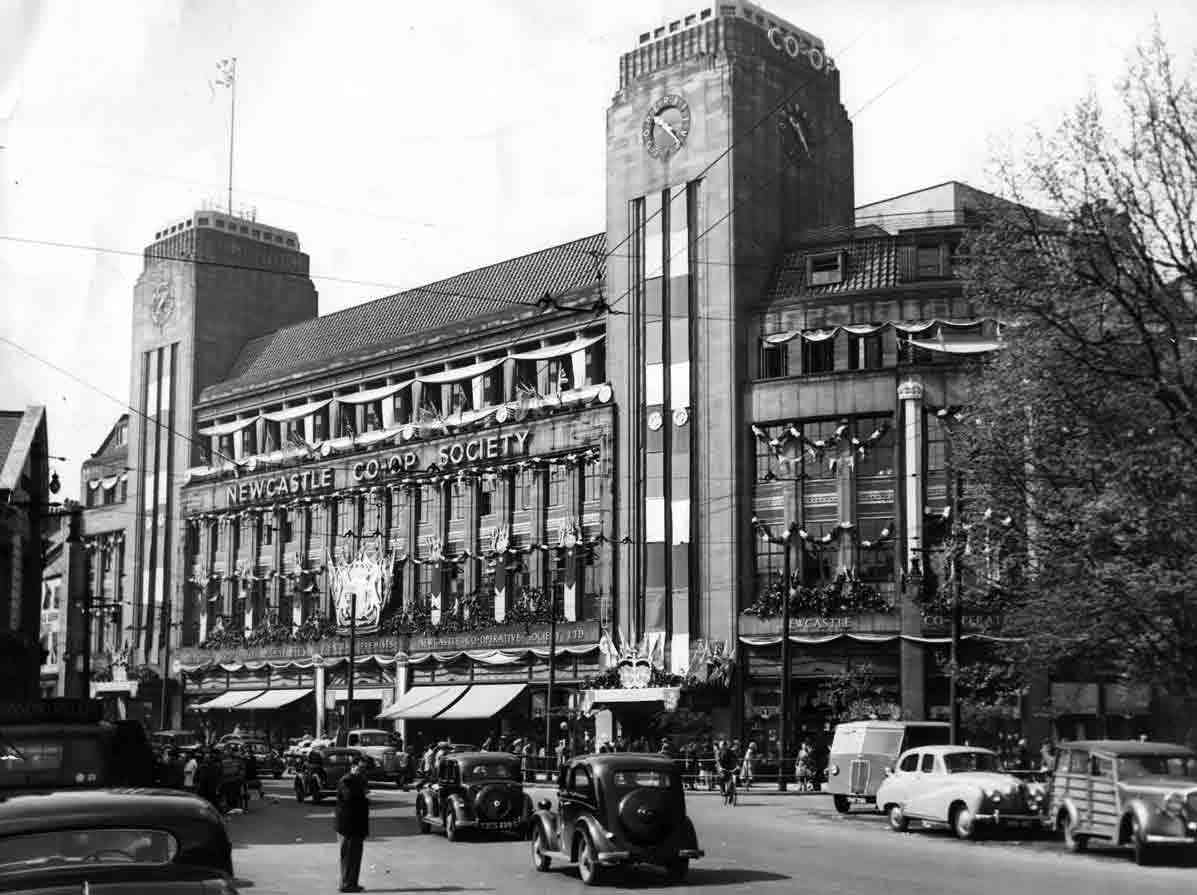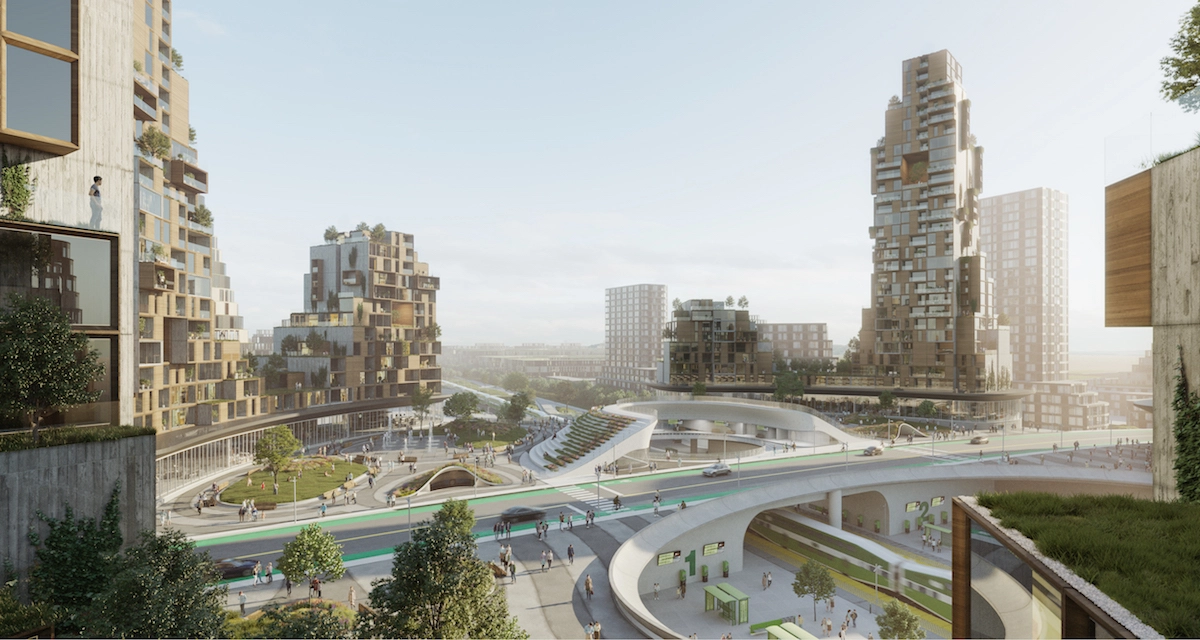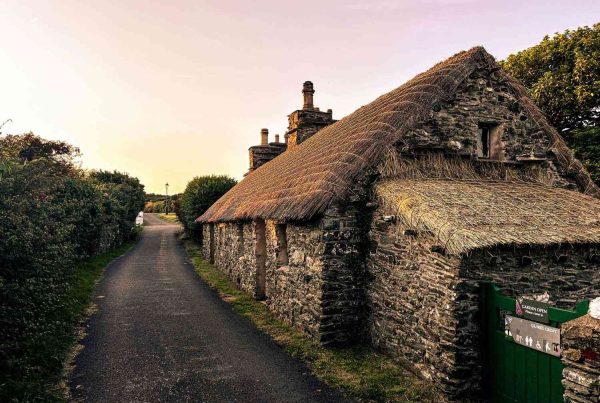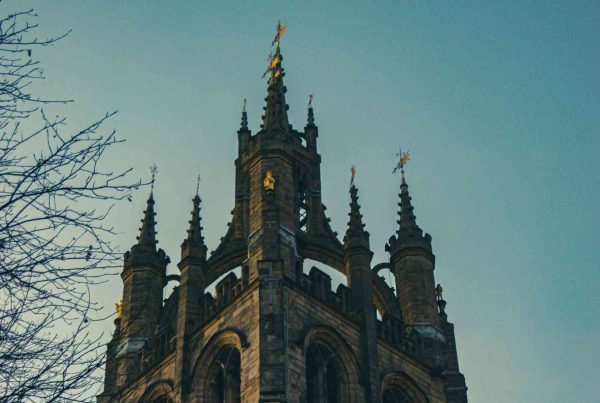If you head down Grey Street on a Tuesday morning you will see nothing but a triumph of Georgian design and architecture. It is, quite simply, one of the finest collections of classical architecture in the United Kingdom and it was precisely for that reason that Newcastle’s city centre was shortlisted for UNESCO World Heritage status. The vast arc of the facades, the rhythm of the windows, the honey-coloured sandstone glowing like butter in the rare Northumbrian sunshine is magnificent to behold. I know that. You know that. It’s a bit of a cliche at this stage. But that’s just it: if you’re only looking at the obvious you’re overlooking what is without doubt one of the most interesting chapters in Newcastle’s built history.
Hidden between the ostentation of Victorian architecture and the elegance of the Georgian masterpieces is a little nugget of history that is without doubt one of my favourite periods in Newcastle architecture. A brief hiatus in the city’s otherwise stately progress between the classical and the contemporary. A moment in time when Newcastle, like every other city on the planet, embraced the brave new world of Art Deco and Moderne architecture with a boldness and a bravura that I think is often overlooked. Heritage architects and architects in Newcastle are keenly aware of it, of course. Most visitors are not. And even fewer Tynesiders, in my experience.
The Interwar Awakening
The 1920s and 1930s were an exciting time to be in Newcastle. The Great War was over, industry was booming and the new wealth pouring into the city created a palpable sense of optimism. It’s easy to forget now, but Newcastle felt like the place to be during this period – a shining example of a post-industrial utopia that was just around the corner. This sense of optimism wasn’t restricted to the North East of course – right across the UK, and indeed the world, architects were rejecting the florid Victorian excess of the nineteenth century and reaching for something cleaner, brighter, more modern.
But Newcastle did this with its own distinctive style. A northern industrial city with its own traditions, its own materials and its own ways of doing things. And so the city’s take on Art Deco wasn’t a slavish imitation of what was happening in London or New York or Chicago – it was a Geordie take on modernism that was international in style but deeply local in its application. The architects Newcastle attracted during this period may not be the household names of their contemporaries working on the Chrysler building or the Daily Express headquarters in London but they were talented professionals who knew how to adapt international architectural movements to local conditions.
The architects Newcastle attracted during this period were, by and large, both talented and responsive to their briefs. They had an intimate knowledge of the city’s materials and topography, and they responded to their briefs in ways that married modernist principles to local conditions in ways that were at once surprising and entirely logical.
C&A: Retail Modernism on Northumberland Street
The former C&A building on Northumberland Street is a different story – a story of how modernist principles were adapted to a rapidly changing world of retail. Designed as a department store when the process of shopping was becoming as much of a ritual as any other consumption activity, this building represents Newcastle’s engagement with modern commercial architecture.
The facade, like much of the C&A’s Newcastle operation, is an object lesson in how to make a powerful visual statement without lapsing into historical pastiche. The clean lines, the geometric patterns, the carefully proportioned windows all combine to create a sense of modernity, efficiency and excitement that must have seemed positively thrilling to shoppers who had been used to the cluttered, higgledy-piggledy Victorian high street. The use of steel and glass and rendered concrete announces that this is a thoroughly contemporary institution.
But where this building is clever, I think, is the way it responds to its context. The architects were not trying to shock or alienate the local population; they were seeking to create something that felt simultaneously modern but also settled and at home in Newcastle’s existing streetscape. The scale is right, the materials don’t jar against their neighbours, the overall effect is one of confident modernity rather than a swaggering futurism.
The interior layout was also quite revolutionary for its time. Open-plan sales floors, escalators and a careful attention to the patterns of movement of shoppers created a retail experience that was not just efficient but pleasurable. This was not simply about selling clothes or furniture or knick-knacks; it was about selling a modern lifestyle, a set of aspirations and a consumer identity that chimed with Newcastle’s burgeoning middle class.
Architects in Newcastle working on similar projects during this period would have had to negotiate the fine line between commercial needs and aesthetic ambitions. The C&A building shows what was possible when architects had an understanding both of the practicalities of retail but also of the visual language of modernism.
The Cooperative Store: Socialist Modernism on Newgate Street
The former Cooperative store on Newgate Street is something rather special – an example of how Art Deco principles could be adapted to serve the higher ideals of the cooperative movement. This is not simply another department store but a conscious attempt to create a shopping experience that treated the working people of Newcastle with both dignity and style.
The building’s facade is more restrained than some of its more commercial contemporaries, but this restraint is deliberate, I think. These architects understood that this building was not trying to convey values of luxury or exclusivity. No, this building was about equality, accessibility, solidarity and all the other –ist words that go with the territory. The result is a building that is undeniably modern but never showy.
The geometric patterns and clean lines are there, of course, but they’re being deployed to make a slightly different kind of point. This is architecture that says that “modern life is for everyone, not just the rich elite”. The materials are honest, unpretentious but high-quality without being ostentatious. The proportions generous but not grandiose.
The most interesting thing to me about this building is that it serves as a kind of time capsule of the political context in which it was built. This was a period when modernist architecture was often associated with progressive politics, and the Cooperative movement was one of the most visible parts of the drive to improve the living conditions of the working classes. This building represents a period when architectural modernism and social reform marched together, hand in hand.
The interior planning is as revolutionary as the exterior design. Architects created spaces that were at once functional and dignified – shopping environments that were not simply capitalist spaces of consumption but shopping environments that treated customers as citizens.
Pilgrim Street Fire Station and its civic modernism
The Pilgrim Street Fire Station on Tyneside might be the perfect example of Art Deco applied to civic architecture. This is a building that had to look authoritative and efficient without being intimidating or inhuman in scale. The architects met that brief admirably.
The facade is a triumph of functional modernism. The large vehicle bays are integrated into the composition rather than being tacked on as an afterthought, while the tower element serves both a practical purpose (allowing hoses to be dried) and a symbolic one. The geometric detailing is subtle but effective, giving visual interest without undermining the building’s inherent seriousness.
But what impresses me most about this building is how it manages to feel both modern and timeless. The architects understood that a fire station had to exude permanence and reliability, but they also knew that it should reflect contemporary ideas about efficiency and progress. The result is a building that looked thoroughly modern in the 1930s but doesn’t feel dated today.
The materiality is particularly well judged. The mix of brick and stone gives visual richness while remaining suitably civic in character. The proportions are generous but not so grand as to look wasteful of public funds. It’s a building that is clearly in the public interest but also a celebration of modern design.
Heritage architects studying this building today would no doubt point to it as an example of how modernist principles could be successfully applied to British civic architecture. It’s neither an unthinking imitation of continental European modernism nor a starchy compromise with traditional styles – it’s a synthesis that is recognisably British and, I would argue, specifically Geordie.
The Northern take on the industrial
Art Deco architecture in Newcastle is so interesting because it’s not simply an echo of continental or American trends – it’s a regional interpretation of those trends. This is a city with a strong industrial history, a northern city with a particular character and set of architectural traditions.
The architects working in the city during this period understood that they couldn’t simply import the latest styles wholesale. They had to make them work within Newcastle’s existing urban fabric, with its different climate, materials, and cultural references.
They used local stone and brick alongside newer materials like steel and glass. They incorporated subtle nods to Newcastle’s industrial heritage in their geometric patterns and decorative schemes. And they created buildings that felt forward-looking without ever losing touch with place.
This is what makes Newcastle’s Art Deco heritage so valuable. These buildings are a record of how global architectural movements were adapted and transformed as they spread around the world. They tell us something important about modernism as a diverse collection of local responses rather than a monolithic style imposed from above.
They also show us something about the character of the city itself. The scale of these buildings is markedly Geordie. Newcastle’s Art Deco architects weren’t trying to build the skyscrapers of New York or London’s grand public buildings. They were creating structures that felt at home in Newcastle while still speaking to broader trends in architecture and design.
Neglected Gems
Why, then, have these buildings been so neglected? Part of the answer is simply timing. Newcastle’s Art Deco architecture was constructed during a relatively narrow window – from the late 1920s to the late 1930s – before the Second World War put an abrupt end to most building activity.
By the time construction resumed in the 1950s, architectural fashion had moved on. These buildings became relics of a bygone era rather than cutting-edge design. They were almost invariably seen as less worthy of preservation than the city’s older buildings.
The post-war period was especially hard on Art Deco. The style was tainted by association with the interwar years’ perceived frivolity and excess. At the same time, the new generation of modernist architects was more interested in the starker aesthetics of Brutalism and the International Style.
In Newcastle, as elsewhere, many Art Deco buildings were demolished or unsympathetically altered during the urban renewal programmes of the 1960s and 1970s. Those that survived often did so by default – they were too useful to demolish, too expensive to alter, or simply too overlooked to catch developers’ attention.
But another factor is at play here, too: Newcastle’s Art Deco buildings aren’t as immediately eye-catching as the city’s Georgian and Victorian architecture. They don’t shout about themselves in quite the same way. They’re more subtle, more integrated into the urban fabric, and therefore easier to overlook.
You have to know what you’re looking for to appreciate them fully. But that, in itself, is a problem: how do you make a case for preserving something that most people can’t see? It’s a challenge that heritage architects working in the city face every day.
Relevance for Today
But it also brings us back to why this architectural heritage is relevant for Newcastle today. These buildings represent a moment when the city was confidently looking to the future while also remaining true to its essential character. They show us how global architectural trends could be successfully interpreted within a local context.
They also demonstrate that modernist architecture need not be boxy, functional, or inhuman – it can be beautiful, serve practical needs while also uplifting the spirit, and both progressive and respectful of context. That’s a lesson that contemporary architects in Newcastle could do well to remember.
For we face similar challenges today. How do we create buildings that feel modern and relevant while also respecting the city’s architectural heritage? How do we balance global influences with local character? How do we serve contemporary needs while also creating architecture that will age well?
Art Deco’s answer to these questions, as I see it, is to be both of its time and timeless. It’s about being modern without being aggressively iconoclastic, about meeting practical needs without neglecting the spiritual, and about finding ways to make architecture that is both forward-looking and rooted in place.
Heritage architects working in Newcastle today are, I believe, increasingly aware of these buildings’ value. They’re being studied, documented, and, in some cases, carefully restored. There’s a growing appreciation for their architectural quality and historical importance.
A Living Tradition
So let’s look forward as well as back. Newcastle’s Art Deco heritage is a living tradition, not just a collection of interesting old buildings. They’re part of the city’s ongoing architectural story, one that continues to unfold today.
And they have a message for contemporary practice. In an age when so many cities around the world feel as if they’re converging toward a bland international style, these buildings remind us of the value of regional interpretation and local adaptation.
They show us that modernism needn’t be generic, that progress needn’t mean the destruction of character, and that it’s possible to create buildings that are thoroughly modern without being rootless. In a city like Newcastle, where architectural traditions have accumulated over the centuries, those are lessons worth remembering.
So the next time you find yourself in Newcastle city centre, take a moment to look beyond the obvious. Look for the clean lines and geometric patterns of the Art Deco era. Notice how these buildings sit within the urban fabric, how they use materials and respond to their context, how they balance modernity with tradition.
You might just see the city in a new light – not just as a palimpsest of historical periods layered on top of each other like geological strata but as a living, breathing place where different architectural traditions inform and inspire each other. And you might begin to appreciate the brief but brilliant moment when Newcastle looked confidently to the future with characteristic northern pragmatism and style.
These buildings are part of Newcastle’s story. Let’s make sure they’re part of its future too.






